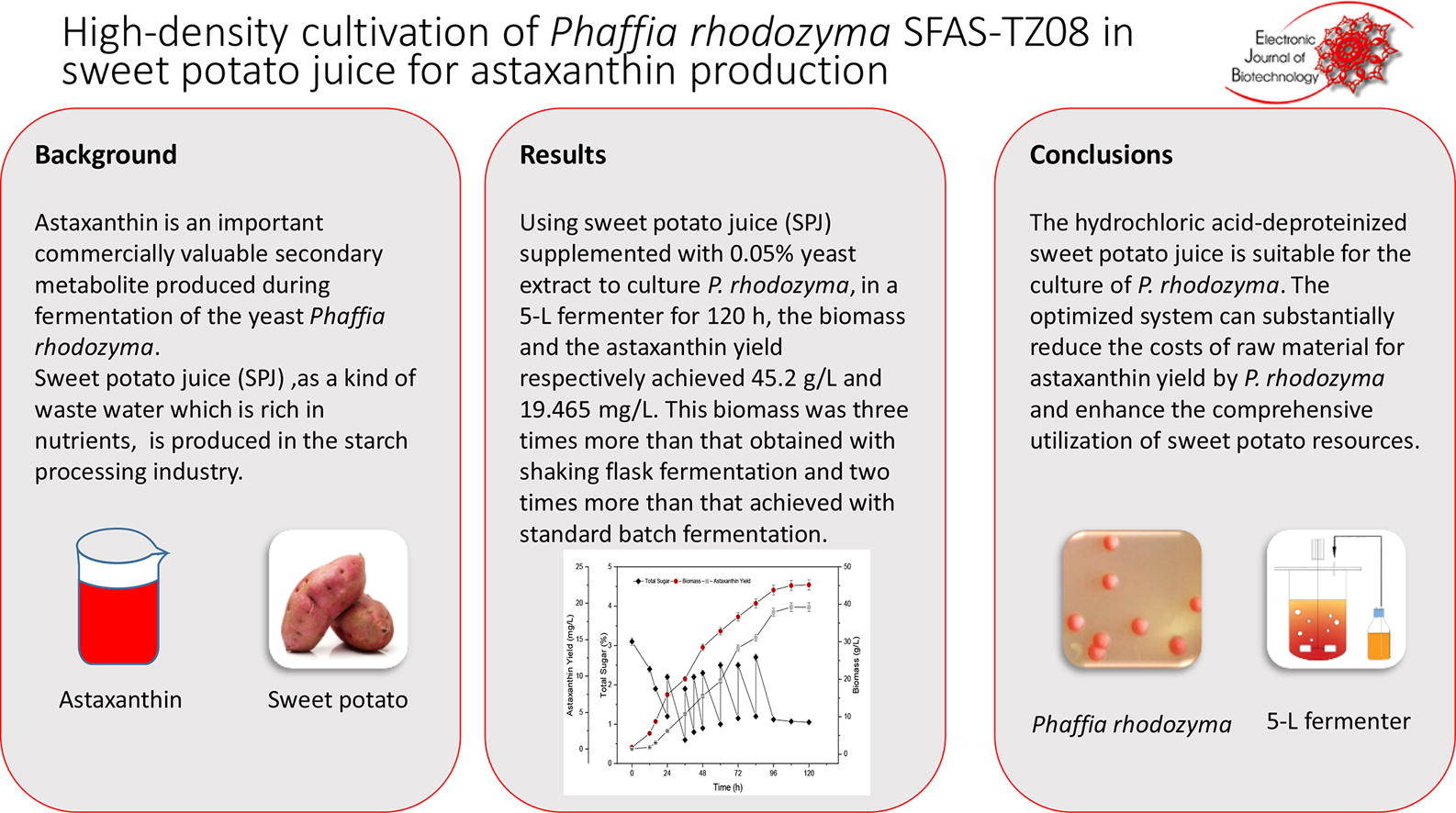Abstract
Background: Astaxanthin is an important commercially valuable secondary metabolite produced during fermentation of the yeast Phaffia rhodozyma that can be used in aquatic feedstock.
Results: In this study, we used sweet potato juice (SPJ), the by-product of sweet potato starch, to obtain a high-density culture of P. rhodozyma. We confirmed that hydrochloric acid deproteinized SPJ is suitable for the culture of P. rhodozyma, and using this as a substrate, supplemented with 0.05% yeast extract, we performed batch fermentation in a 5 L fermenter. Compared to shaking flask fermentation, we obtained an 18.86% increase in yeast biomass and a 32.5% increase in astaxanthin yield using the batch process. After culturing P. rhodozyma in a 5 L fermenter for 120 h, we achieved biomass and astaxanthin yield of 45.2 g/L and 19.465 mg/L, respectively.
Conclusions: In this study, we found that deproteinized SPJ was the most suitable for P. rhodozyma through experiments on different cultivars and different processing stages of SPJ. On the basis of deproteinized SPJ, supplemented with yeast extract, the biomass and astaxanthin yield reached a high level. The optimized system can substantially reduce the costs of raw material for astaxanthin yield by P. rhodozyma and enhance the comprehensive utilization of sweet potato resources.
Upon acceptance of an article by the journal, authors will be asked to transfer the copyright to Electronic Journal of Biotechnology, which is committed to maintain the electronic access to the journal and to administer a policy of fair control and ensure the widest possible dissemination of the information. The author can use the article for academic purposes, stating clearly the following: "Published in Electronic Journal of Biotechnology at DOI:10.2225/volXX-issueX-fulltext-XX".
The Copyright Transfer Agreement must be submitted as a signed scanned copy to biotec@ucv.cl. All authors must send a copy of this document.
